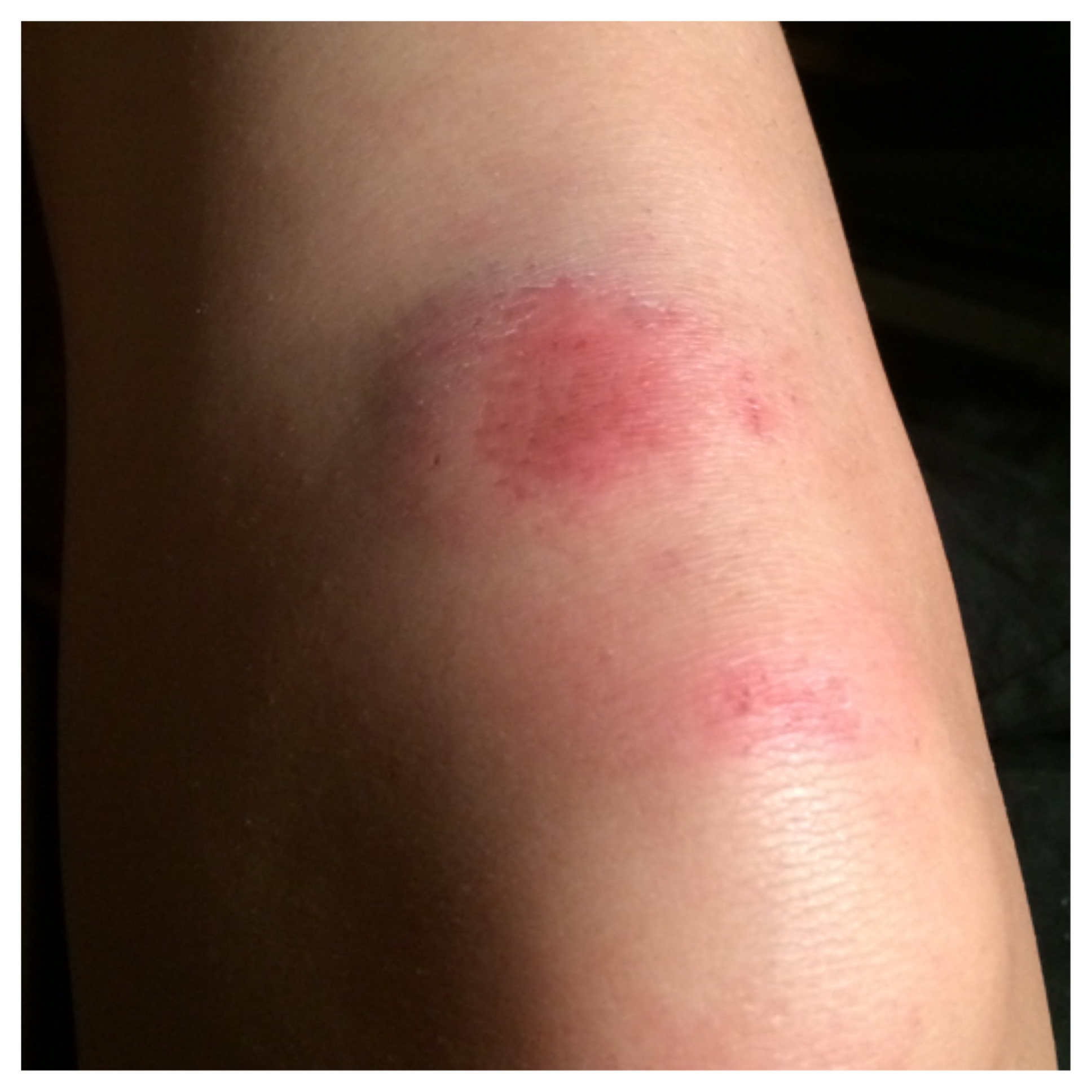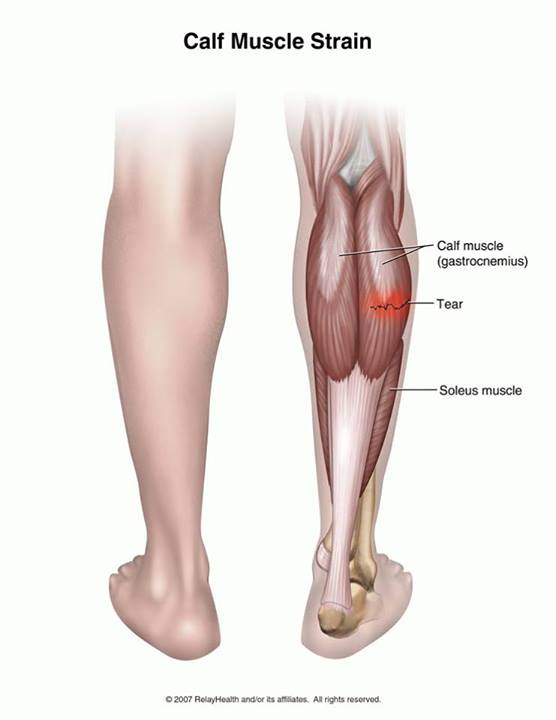Haglund’s Syndrome & Deformity

Haglund’s Syndrome is a condition that occurs at the back of the heel when you are suffering from Achilles tendonitis and bursitis in the retrocalcaneal bursa. The retrocalcaneal bursa is a small fluid-filled sac at the back of the calcaneus (heel bone) that allows the Achilles tendon to slide smoothly over the heel bone.
Achilles tendinitis (also spelled tendonitis) is inflammation in the Achilles tendon, often due to irritation and/or micro-tearing of the collagen fibers. Achilles bursitis occurs when the retrocalcaneal bursa is irritated from frequent pressure and it becomes inflamed. In some cases, the inflamed bursa also becomes infected with bacteria (referred to as septic bursitis) and it is necessary to see a doctor to get rid of the infection.
Haglund’s Deformity is a painful, enlarged boney protrusion of the upper posterolateral calcaneus that is caused by calcification of the heel bone due to the inflammation of Haglund’s Syndrome. Unfortunately, the boney protrusion causes further irritation to the retrocalcaneal bursa and Achille tendon due to excess compression of the Achilles tendon and bursa between the protrusion and the back of shoes or other footwear. This increased irritation than causes Haglund’s Syndrome to become worse.
Due to similar symptoms and the location in the Achilles tendon area, Haglund’s Syndrome is frequently misdiagnosed as Achilles tendonitis.
Symptoms:-
Sufferers of Haglund’s Syndrome may experience:
- Pain at the back of the calcaneus and up the Achilles tendon, especially with jumping, hopping, tip-toeing, walking or running uphill or on soft surfaces.
- Stiffness in your Achilles tendon when you wake in the morning.
- Tenderness, warmth and swelling which might make it difficult to wear certain shoes.
- As the retrocalcaneal bursa becomes more inflamed you will experience swelling. Swelling can cause difficulties moving the affected area and the range of motion in the ankle is usually affected.
- Limping due to the pain may occur.
- Possibly a fever if you are suffering from septic bursitis (You will need to see a doctor for medication to get rid of the infection).
- The Achilles tendon and retrocalcaneal bursa are irritated by heat but feels good when treated with cold compression and rest.
- Weakness in the Achilles tendon and gastrocnemius or soleus muscles can develop as the pain worsens and the inflammation in the area spreads.
- For individuals who wear high-heeled shoes frequently, they may also feel an increase in pain when they are wearing flat shoes. When wearing high-heels, the calf muscles and Achilles tendon remain in a shortened position. When flat shoes are worn it causes the calf muscles and Achilles tendon to stretch more than usual causing the tendon to tighten around the heel bone and the tendon and bursa become irritated.
Who is at Risk?
Haglund’s Syndrome is a very common runner’s injury as well as with other athletes. It often results from sport footwear (i.e. runners, golf shoes or hockey skates) frequently compressing the retrocalcaneal bursa and Achilles tendon while participating in sports.
Women aged 15-35 who wear high heeled shoes also have a high incidence of Haglund’s Syndrome and Deformity. It is thought that the pressure on the Achilles tendon and retrocalcaneal bursa is made worse by the height of the heel. Due to the relationship between women’s shoes and Haglund’s Syndrome, the swollen bump that forms at the back of the heel because of this condition is often referred to as “pump bump”.
It is important to treat Haglund’s Syndrome in the early stages to reduce the symptoms, minimize damage and maintain motion and strength in your foot. Resting your ankle, using proper cushioning, wearing comfortable footwear and reducing any activities that add pressure on your retrocalcaneal bursa and Achilles tendon will help to reduce your pain and inflammation. By treating Haglund’s Syndrome in the early stages you are more likely to prevent long-term damage and chronic conditions from setting in.
Physiotherapy of haglud’s syndrome – What You Can Do!
Relieving the symptoms of Haglund’s Syndrome initially focuses on taking the pressure off the retrocalcaneal bursa and reducing inflammation in the Achilles tendon. This can be done with proper cushioning, inserts, or footwear but may require surgery to reduce the enlarged heel bone if the syndrome is caused by Haglund’s Deformity. Preliminary treatment starts with cold therapy and ultrasound treatments.
The most important factor in healing Haglund’s Syndrome (Achilles bursitis and tendonitis) is resting your ankle. This can be difficult when you have to carry on with daily activities, but resting and elevating your foot whenever you can is recommended. During your recovery you will probably have to modify or avoid the activities that put stress on your retrocalcaneal bursa and Achilles tendon until your pain and inflammation settle.
To decrease inflammation and relieve pain caused by Haglund’s Syndrome use cold therapy and therapeutic ultrasound. Blood Flow Stimulation Therapy (BFST®) is very effective at improving the elasticity of the retrocalaneal bursa sac, Achilles tendon and muscle tissue in the ankle which decreases the risk of your ankle condition becoming chronic and/or Haglund’s Syndrome returning.
Cold Compression Therapy:
The R.C.C.E. treatment philosophy is used to decrease inflammation and relieve the pain of Haglund’s Syndrome quickly when your retrocalcaneal bursa and Achilles tendon are inflamed and painful.
Rest and limit your activity, to decrease swelling and minimize further inflammation in the Achilles bursa and tendon.
Cool the back of your heel to help reduce blood flow and fluid build up.
Compress the area if possible by adding light pressure to minimize swelling (make sure the wrap is snug, but not too tight as it could cause more pain on the bursa).
Elevate your foot to relieve the pressure from swelling.
Applying cold to your Achilles bursa and tendon will decrease the swelling and redness at the back of your heel. In addition, it will numb the pain in your heel and help to control the inflammation. Simply, apply cold to your ankle as needed throughout the day, for approximately 10-15 minutes at a time.
The cold compression Ankle/Achilles Freezie Wrap® can be used to apply cold in a safe, convenient and effective way – and the gel pack is reusable. Only the Freezie Wrap® gel pack is charged in the fridge. This means the cooling temperature of the gel pack will not cause cold burns, or cryoburn, on your skin like ice or freezie charged gel packs can. You can also treat yourself for longer periods of time so you get lasting pain relief.
The gel pack sits over the inflamed bursa and tendon to reduce swelling and redness. The wrap is soft and adjustable so it fits your foot properly, without irritating the retrocalcaneal bursa, and allows you to adjust the compression. This is important when treating an inflamed bursa because too much pressure can cause you further pain. You control how much pressure the bursa receives so you can benefit from the compression to hold the cold where you need it, without increasing your pain.
In addition to cold therapy, doctor’s recommend using ultrasound therapy to further reduce inflammation and treat scar tissue to prevent Haglund’s Syndrome from returning.
Ultrasound Therapy:
Ultrasound has been used by physical therapists and chiropractors for years to treat Haglund’s Syndrome. By applying ultrasound therapy to your sore bursa and tendon you can reduce the inflamed fluid that has built up in the bursa, reduce inflammation caused by the bony protrusion of Haglund’s Deformity, and reduce inflammation on your Achilles tendon. In addition, ultrasound therapy will treat any other soft tissue conditions that you may be experiencing in your foot such as gout, arch pain, hammer or claw toe, inflammation due to a heel spur and more. By treating yourself with ultrasound everyday, you are able to rid yourself of pain and start using your ankle joint (talocrural joint) normally again.
But that’s not all. With Haglund’s Syndrome you will develop scar tissue on the bursa sac and Achilles tendon. As your damaged tissue begins to heal, this fibrotic, dense tissue is naturally produced instead of forming brand new healthy tissue. Calcification of the bursa and tendon may also occur, adding to the bursa and Achilles tendon pain you are already experiencing. Scar tissue adheres to your bursae, muscle fibers, tendons, ligaments, fascia, and nerves in the ankle causing pain and preventing proper movement (this limits your range of motion, flexibility and strength) of your foot. Fortunately, therapeutic ultrasound treatments can also get rid of unwanted scar tissue and soften calcified areas of the Achilles tendon and bursa.
Ultrasound therapy is a great option to decrease inflammation, pain and scar tissue experienced with Achilles bursitis, tendonitis and other soft tissue injuries. The treatment is easy, painless, and generally requires between 5 – 10 minutes of your time. It is based on a form of deep thermal therapy which is generated through high frequency sound waves that reach into the cells of your Achilles bursa, tendon and other soft tissue in your ankle. These sound waves help to reduce the fluid build up in the bursa, heal any tissue damaged through trauma, reduce scar tissue build up on the Achilles tendon, as well as reduce any inflammation caused by calcific deposits that gather in the retrocalcaneal bursa and Achilles area.
Ultrasound can also be used to administer therapeutic medicines into the body. This is a process known as phonophoresis. Ultrasound with phonophoresis is rapidly becoming more popular than ultrasound therapy alone.
Using the MendMeShop® Lavender Infusion Gel during your ultrasound therapy gives you 2 therapies in 1. You get the benefit of the regenerating sound waves from the ultrasound device itself AND the added bonus of the therapeutic ingredients inside the gel being delivered into the tissue where it is most effective.
Lavender Infusion Ultrasound Gel contains the natural essential oils of Bulgarian lavender, peppermint, eucalyptus, and menthol and is exclusively available from MendMeShop®. These ingredients reduce inflammation, relieve pain and improve blood circulation to your retrocalcaneal bursa and Achilles tendon. 1 bottle of MendMeShop® Lavender Infusion Ultrasound Gel comes FREE with every MendMeShop® Ultrasound System so you get unbeatable ultrasound therapy for your ankle.
Blood Flow Stimulation Therapy:
Once the inflammation of Haglund’s Syndrome has been reduced with cold therapy and ultrasound treatments it is time to improve blood flow and improve the elasticity of your surrounding soft tissue. Your body needs a fresh supply of blood to improve the health of your tissue and get your bursa and Achilles tendon back to normal.
Unfortunately, when you are suffering from Haglund’s Syndrome it is painful to walk and move your foot normally. When you limit movement in your foot the blood flow is reduced, starving your tissue of the necessary oxygen and nutrients. The trick is to find a way to increase blood flow without causing pain and/or further inflaming the bursa and tendon. This is where Blood Flow Stimulation Therapy (BFST®) becomes a powerful tool.
BFST® compliments your body’s natural healing process by promoting the flow of blood to your foot while you give it the rest it needs.
The Ankle/Achilles Inferno Wrap® uses a patented process to generate the same energy that is part of the sun’s spectrum of light, the same energy that is necessary to all living things for optimum health. The energy emitted from the Energy Web® stimulates blood flow to your ankle, more than you body would ever be able to generate on it’s own, giving your body the boost it needs to continue the reconditioning process. The healing energy reaches deep into your retrocalcaneal bursa and Achilles tendon to speed tissue repair, whisk away the toxins and dead cells, and rejuvenate your ankle tissues for improved elasticity.
This 3 step process is the most effective method to treat your swollen and painful bursa, reduce the inflammation in your tendon and improve the health of the soft tissue in your ankle.
Pain and Anti-inflammatory (NSAIDs – Non-steroidal anti-inflammatory drugs) can be used if required to help manage your pain. However, these aren’t recommended for long term use, as they can cause gastrointestinal difficulties and increase the risk of cardiovascular disease. The use of cold therapy, ultrasound and BFST® in conjunction with NSAIDs can greatly improve the effect of this medication and can help to heal quicker.











